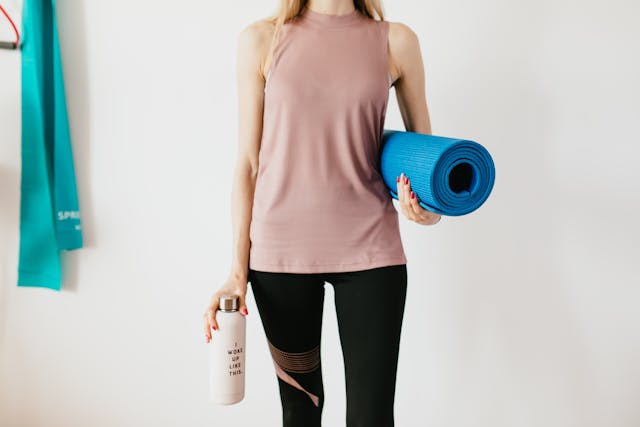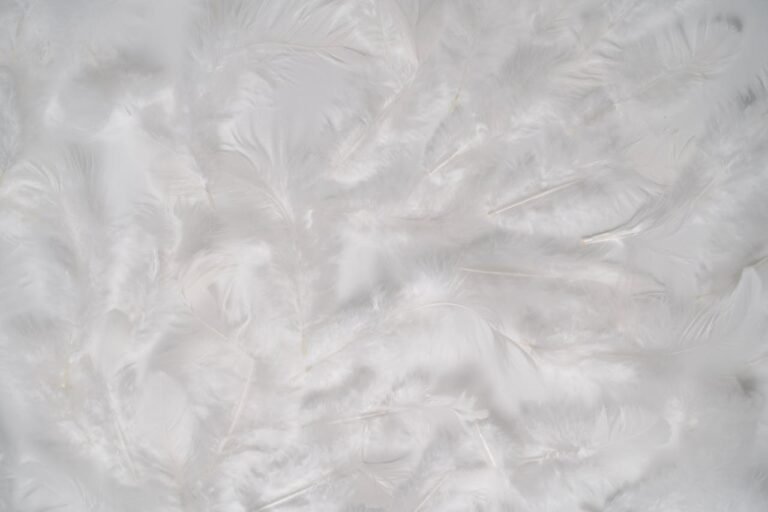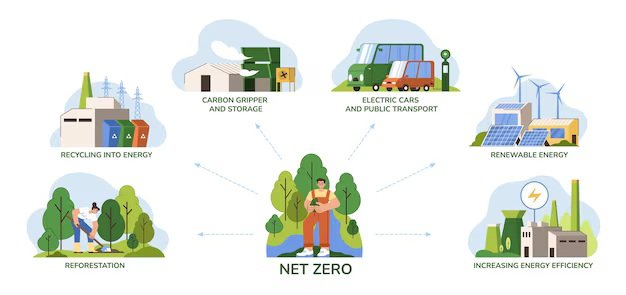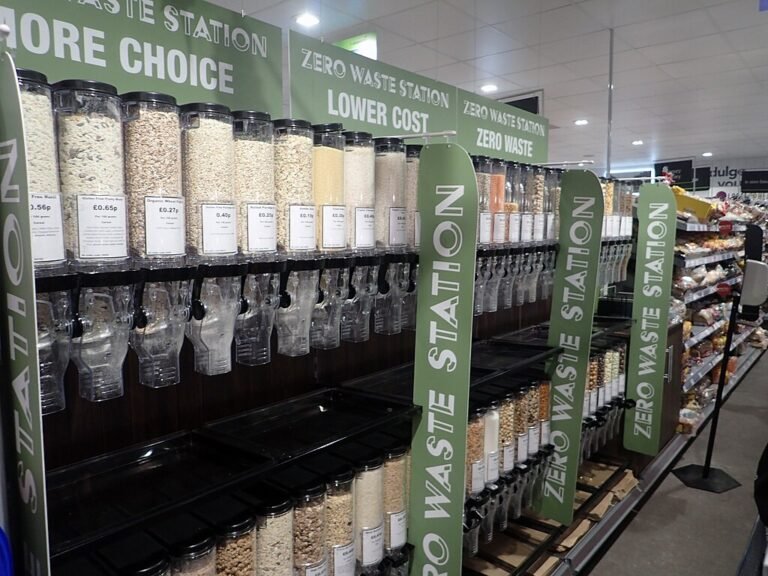Sustainable Alternatives to Synthetic Fabrics in Sportswear
As consumers become more eco-conscious, industries are retracing their steps, prioritising sustainability through innovations. The sportswear industry is among the innovators in the textile and clothing sector, adopting new ideas to minimise textile waste while providing comfortable sportswear and sports footwear.
Fast fashion has become so popular, filling the market with cheap and low-quality fabrics. Cheaply manufactured and unsustainable fabrics have gained popularity in the sportswear industry, as synthetic fabrics are preferred due to their availability.
When choosing sportswear, personal considerations include breathability, flexibility, durability, strength, and protection. Synthetic fabrics may be breathable and flexible, but they are far from being sustainable
Sustainable material considerations in sportswear design hardly come to mind once the fabric is durable and flexible for physical activities. Synthetic fabrics in sportswear are unsustainable as they contribute to textile waste.1

In This Article
- Choosing Natural Fibres over Synthetic Fibres (Expert Review)
- Sustainable Alternatives to Synthetic Fabrics in Sportswear
- Innovations in Eco-Friendly Materials for High-Performance Sportswear
- Case Studies of Brands Using Sustainable Fabrics
- What Are the Best Sustainable Materials for Activewear?
- What Synthetic Fabric is used in Sportswear?
- Conclusion
- Sources
Choosing Natural Fibres over Synthetic Fibres (Expert Review)
Natural fibres are often considered better, more durable, and more sustainable than synthetic fibres. Dr. Rachel McQueen of the University of Alberta closely studied synthetic and natural fibres. According to an article published by the BBC, Dr McQueen compared polyester clothing with sustainable materials such as merino wool and cotton. The comparison showed that polyester tends to retain odour because polyester fibres don’t absorb moisture.2
Unlike polyester clothing, cotton is absorbent and does not produce much odour. Cotton is super-absorbent, trapping the odorous compound produced due to the presence of bacteria inside the fibres.
A group of researchers in Belgium and the Netherlands discovered that when comparing polyester clothing and cotton, Micrococcus, a bacterium known to produce odour, prefers to grow on synthetic fibres rather than cotton.2 Additionally, Micrococcus prefers to grow on polyester rather than any other fabric. This explains why synthetic sportswear tends to produce more odour.
Sustainable Alternatives to Synthetic Fabrics in Sportswear
Organic Cotton
Organic cotton is a green fabric that makes comfortable, durable, and flexible sportswear.3 It’s a preferred choice with less environmental impact compared to synthetic fibres. Organic cotton is a sustainable alternative to standard cotton, which is produced in an unsustainable manner. Producing standard cotton takes its toll on the environment.
It’s said that the production process of standard cotton releases large amounts of carbon. Organic cotton is a more sustainable option that offers the same quality. It’s durable, breathable, and soft on the skin, making it suitable for sportswear.
The material is sustainably grown without toxic chemicals and synthetic pesticides that pollute the environment. Growing organic cotton on farms helps build healthy soils.
Unlike synthetic fabrics, organic cotton can naturally biodegrade and is ideal for making sportswear due to its absorbent nature.
While organic cotton is more sustainable than standard cotton, growing it consumes a large amount of water. It’s estimated that 2,700 litres (713 gallons) of water are used to make a single cotton shirt.4
Learn more: What Is Textile Recycling and How Does It Work?
Merino Wool
Merino wool is a natural fibre extracted from merino sheep. It’s a superfine natural fibre and comfortable to wear due to its soft and breathable nature.5
Merino wool is a sustainable alternative to synthetic fabrics. The fibre is naturally hydrophobic but absorbs odour molecules, trapping the odour in the garment.
Merino wool is a sustainable material that has long been used in the clothing industry. The fabric is currently being used by clothing brands to make trekking and skiwear. Due to its breathability and odour resistance, it is ideal for yoga wear and running clothes.
Merino wool is an easy-to-wash fibre that comes with a natural protective layer that prevents stains from being absorbed. The fibre also protects users from UV radiation, making it suitable for outdoor activities on a sunny day.6
Merino wool is a better clothing choice sourced sustainably from livestock, and at the end of its life, it biodegrades within a few months without harming the environment.
Tencel
Tencel fibres are extracted from wood pulp, making them environmentally friendly. According to Vogue.com, “Tencel fibres are made from wood pulp sourced from controlled or certified wood sources”.7
Unlike synthetic fibres, Tencel fibres are certified biodegradable and compostable. The fibres are naturally soft, making them the perfect material for performance wear.
According to Nicole Schram, Lenzing’s global business development manager,” Tencel fibres of botanic origin keep your body pleasantly cool and dry with their natural comfort and versatility, giving you the freedom to move with confidence in all different kinds of sports.”
Bamboo
Bamboo fabrics are sustainable alternatives to synthetic fabrics, and they are fast becoming popular in the clothing industry. Bamboo fabric sportswear is odour-resistant due to its antimicrobial properties.
Designed to offer flexibility, durability, and breathability, the fabric keeps you dry and fresh during your workout sessions. Bamboo fabric sportswear has become the preferred choice of athletes and gym-goers.
Bamboo is a renewable material that replenishes quickly. It grows in nature without the use of toxic chemicals and synthetic pesticides.
While bamboo is naturally grown without pesticides, certain bamboo materials require a chemical-intensive process to transform the plant into yarn. It’s an unsustainable process that poses a threat to the environment and workers’ health.
Learn more:
Innovations in Eco-Friendly Materials for High-Performance Sportswear
The fashion industry is becoming more eco-conscious, with sustainable fabrics gaining more popularity. Athletes and fitness enthusiasts are embracing the new trend of sportswear made with sustainable fabrics, which offer everything and more than synthetic fabrics.
Why choose polyester clothing that retains more odour over sustainable alternatives that are odour-resistant? With sportswear made from natural fibres, you get a comfy, soft, and durable wear that keeps you dry for longer.
While living a healthy lifestyle by engaging in physical activities, either out in nature or indoors at the gym, staying physically active in the best sportswear not only offers flexibility, durability, and breathability, but it also protects the environment at the end of the product’s life.
High-performance sportswear has evolved into a technologically advanced industry from the cotton sportswear of the past. It has reshaped normal workout routines by introducing materials engineered to monitor athletes’ performance and enhance their athletic ability.8
Use of Sustainable Sportswear
Prioritising sustainability has become a popular trend in the clothing industry. Brands are making sustainable sportswear with organic fabrics and recycled materials to promote environmental sustainability by reducing textile waste.
Sustainable alternatives to synthetic fabrics in sportswear naturally biodegrade at the end of the material’s life. Materials sustainably obtained from nature are far better, providing comfort than synthetic fibres.
UV Radiation Protection
High-performance sportswear is engineered to protect athletes from UV radiation by using nanotechnology. With this innovation, athletes are protected from harmful UV rays while they exercise.
Enhanced Breathability
Nanoparticles can be utilised to establish improved breathability in sportswear design. Through this innovation, athletes and fitness enthusiasts can have a regulated body temperature.
Smart Devices
It’s easy for athletes and gym-goers to monitor their heart rate, track distance and amount of burned calories during workouts with smartwatches and fitness trackers. These smart devices are commonly worn these days to monitor performance during exercise.
Case Studies of Brands Using Sustainable Fabrics
The sustainable trend has emerged as a demand made by eco-conscious consumers. Brands are making the switch to manufacturing sustainable sportswear to minimise textile waste.
1. Adidas
Adidas, Europe’s largest sportswear manufacturer, is committed to climate neutrality by 2050. The world’s second-largest sportswear manufacturer understands that the fashion industry remains one of the largest carbon dioxide emitters on the planet.
According to the German athletic apparel and footwear corporation, they have taken charge into their hands by rethinking the materials they use. Adidas is committed to providing solutions to make durable products that last longer. Their true intent is to collaborate with innovators in the fashion industry to promote sustainability.9
“Our company has set very clear targets on what we want to achieve and we will do exactly that,” says Bjørn Gulden, the CEO of Adidas and a Norwegian businessman.
Gulden further explained that “Sustainability is going to be one of the things that every employee, especially those working on products, needs to know about. “It’s not something we can delegate to just one department. I believe that everybody in the company needs to know of this,” says Bjørn Gulden.10
Adidas uses polyester in its production line due to the material’s unique properties. However, the brand understands the environmental consequences of using virgin polyester. Being derived from petroleum, the manufacturing process of polyester is resource-intensive.11
In 2017, Adidas set a target to replace all virgin polyester in all its products with recycled polyester. According to a statement on the brand’s website, 99% of all the polyester they used in 2023 was recycled.
2. The Classic T-Shirt Company
The Classic T-Shirt Company is an American company founded by Paul and Olga Garibian. The California-based company is committed to making sustainable and durable garments sourced from 100% organic cotton.
The co-founder’s genuine intent is to create handcrafted garments derived from sustainably sourced materials. They choose organic cotton because it is naturally grown without the use of fertilisers and synthetic pesticides.
3. BEEN London
The founder of BEEN London, Genia Mineeva, is minimising the amount of textile waste sent to landfills through sustainable efforts. Mineeva believes that the continuous process of extracting raw materials impacts climate change.
BEEN London transforms discarded materials into totes and crossbodies. They also make remarkable transformations by turning single-use plastic bottles into silky linings and zips, while vegan leather is made from apple peels and pineapple leaves.12
What Are the Best Sustainable Materials for Activewear?
Organic hemp is a sustainable material grown naturally without pesticides and fertilisers to improve soil quality. Hemp fabric is durable and perfect for activewear.
While the material may not be as stretchy as synthetic fabrics, it offers more durability and UV protection during outdoor workouts.
Organic cotton is another natural fibre perfect for activewear. Naturally grown fibre without pesticide and fertiliser use, organic cotton is soft, comfortable, and breathable.
While organic cotton is more sustainable compared to standard cotton, growing it consumes a large amount of water. It’s estimated that 2,700 litres (713 gallons) of water are used to make a single cotton shirt.
Merino wool is another perfect choice for activewear. It’s an easy-to-wash fibre that comes with a natural protective layer that prevents stains from being absorbed. The fibre also protects athletes from UV radiation, making it suitable for any outdoor activities on a sunny day.
Merino wool is a better clothing choice sourced sustainably from livestock, and at the end of its life, it biodegrades within a few months without harming the environment.
What Synthetic Fabric is used in Sportswear?
Synthetic fabrics commonly used in sportswear include polyester, nylon, and spandex.
Polyester is often considered a better choice for strenuous workouts because of its durability and moisture-wicking properties. The synthetic fabric is often blended with spandex to make a good stretch and recovery fabric, which is used to make sports bras and leggings.
Polyester may be stretchy for good workout sessions, but the fabric still quickly develops bacterial growth that creates odours.
Nylon is another synthetic fabric commonly used in sportswear, such as bras and cycling shorts. While nylon is durable enough for the perfect activewear, it is not odour-resistant and breathable.
Nylon does not biodegrade and can persist in nature, releasing microplastics into nearby ecosystems.
Lastly, spandex is a super-stretchy material that can expand up to five times its normal length. Spandex is used in making swimwear, leggings, and yoga pants. It’s a synthetic fibre with low heat resistance that traps sweat and bad odour on the skin. Exposure to toxic chemicals from spandex can lead to serious health issues.
Conclusion
Although they may be flexible, durable, and breathable, synthetic fabrics are not sustainable for continuous use. Natural fibres are better, durable, and more sustainable for use in sportswear. Unlike synthetic fibres, natural ones are durable, flexible, and provide better overall performance while being eco-friendly.
Sources
- Textiles for sportswear. (n.d.). ScienceDirect. ↩︎
- BBC. (2017, January 16). Episode 1 – Should I wear sports clothes from natural or synthetic fabric? ↩︎
- Yu, C. (2015). Natural textile fibres. In Elsevier eBooks (pp. 29–56). ↩︎
- W, J. (2021, August 12). Why choose organic cotton? The Little Gosling. ↩︎
- What is Merino wool? (2023, November 14). REI. ↩︎
- Company, W. (2020, September 1). 6 reasons to workout in wool. Awi-woolmark2017-ui. ↩︎
- Vogue. (2024, June 19). How to shop conscious sportswear with Tencel this summer. British Vogue. ↩︎
- Marcia. (2023, October 11). Exploring the latest technologies in High-Performance Sportswear design. Medium. ↩︎
- adidas. (n.d.). ↩︎
- Interview with our CEO – adidas Annual Report 2022. (n.d.). Adidas Annual Report 2022. ↩︎
- More Sustainable Materials – adidas Group. (n.d.). Adidas. ↩︎
- Wong, M. (2024, March 4). 18 sustainable fashion brands to support. Earth.Org. ↩︎







